Pitch your fork into Juliet Desailly’s bracing ideas for a WWII inspired gardening project...
Spring is coming and what could be better than involving your children in the fresh air and exercise of growing their own food? Whether the school already tends its own fruit and veg patch, or is looking to germinate a new gardening project, the Second World War and Dig for Victory provide an excellent stimulus for practical learning.
In its historical setting, Dig for Victory changed the living habits and attitudes of an entire generation. And by examining the reasons why the campaign was so successful and tracing its continued influence, we can cultivate a bumper crop of cross curricular activities in the classroom.
History lessons aside, the aspirations of Dig for Victory have never been more relevant as healthy eating, sustainability and a desire to reduce our carbon footprint are becoming an increasing concern for schools and their local communities. So why not use these activities to add climate change to the list of learning for your next WWII topic?
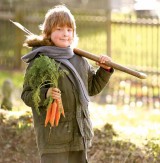 How can we become self sufficient?
How can we become self sufficient?
To start the project off, divide children into groups and give them the role of government advisers at the beginning of World War II. Give each group cards with relevant facts on them such as:
• The UK imports over 55 million tons of food a year from abroad.
• Merchant ships will be targeted by the enemy.
• What merchant ships we have will be needed for troop supply.
• Many people who farm the land now will be called up to join the armed forces.
Ask them to plan how the country can provide enough food for everyone and distribute it fairly during the war. If they are used to working in this way, you might assign one of de Bono’s thinking hats to each group member.
After they have had time for discussion, ask each group to feed back and consider their proposals. Link these to the actual solutions of rationing, the Women’s Land Army, and extending food production to all spare land including parks, sports grounds and gardens.
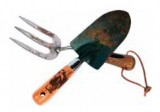 Make the case for growing your own…
Make the case for growing your own…
Ask the children to consider where they could have an allotment in the school grounds. (You may, of course, already have land the children cultivate.) If necessary, the children could prepare a case for turning land into an allotment to put to the headteacher and school governors.
When the area is agreed, they need to start preparing the soil. Having adult helpers is really useful in a project of this sort and is a wonderful way of making links with parents, grandparents, retired community members or school friends who can work with groups on your allotment and also keep an eye on things during the holidays. Child-sized tools and Wellington boots make life easier as well, so advance planning is necessary.
If no land can be made available to dig then there is always the possibility of using old car tyres and boxes as planters.
Let the children choose what to grow from a list of possibilities. It may be possible to ask a local supplier to donate the seeds you need.
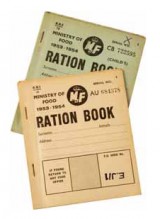 Hello Mr Chumley Warner!
Hello Mr Chumley Warner!
This is a good time to look at the leaflets written and distributed during World War II. (The 1945 monthly allotment guides can be found at earthlypursuits.com/AllotGuide/AllotGuide.htm) This provides lots of literacy work on instructional and persuasive writing and features of non-chronological writing. It will also give them good advice and information to help with growing their own produce.
The children can compare the importance of the country producing its own food in wartime to the good reasons for doing the same today. They can write their own leaflets for the local community to persuade them to buy local produce, grow their own veg and reduce air miles on food they eat.
Children could also investigate the air miles of a typical day’s meals and the places of origin of the foods in their homes.
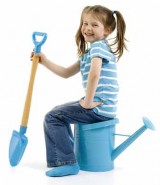 Give Potato Pete a makeover…
Give Potato Pete a makeover…
The Dig for Victory posters are vivid examples of the wartime propaganda and information machine in action and many of the images are iconic. (Search image results for ‘Dig for Victory’ online.) Ask the children to analyse the design features of the posters. What makes them work? What images are used? Who is being appealed to and how? Ask the children to design their own Dig for Victory posters using similar features.
They could also look at the leaflets about Potato Pete and Dr Carrot, two cartoon characters designed to make eating these vegetables more attractive. There was even a Potato Pete song. The children could invent their own advertising characters for a healthy eating or local produce campaign. What kind of characters would appeal to us now? And could they compose a song to back up their campaign? The website homesweethomefront.co.uk is a useful resource.
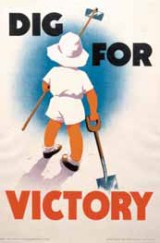 Create your own farmers’ market…
Create your own farmers’ market…
As the children work on their allotment, there is the possibility for lots of practical science work on how plants grow. As harvest time approaches, decisions need to be made about what to do with the crops. There is the possibility of an enterprise project: setting up a farmers’ market in the school playground at the end of the day to sell the produce. This offers lots of potential for advertising, pricing, handling money and developing social and organisational skills in running the mini-market. Some school cooks will happily incorporate vegetables the children have grown into the school dinner menu. I even know of an inner-city school that keeps its own chickens and provides the school kitchen with eggs.
A tasty way to investigate insulation…
During the war, people would use a hay box to cook their meals, and reproducing this technique in the classroom provides scope for an interesting science investigation. This involves starting off a stew or casserole on a normal hob but, once it is hot, transferring the casserole dish to a box lined with hay. More hay is placed over the dish, which is then covered with a lid and left to cook for several hours in its own heat.
The children could usefully experiment with different insulating materials as well as hay (blankets, polystyrene, foam rubber, paper?). The heat of the food could be measured with a thermometer at periodic intervals and the best insulator discovered. There is a lot of advice on hay box cooking on the internet. It should lead to useful discussion on saving energy too.
8 Ways To Get Your Class Drawing
Ace-Art-And-Design
Use the bottle-flipping craze to create good school behaviour, not bad
Behaviour Management
Use scaffolding to wean children off high levels of TA support
Ace-Kitchen-Manager
